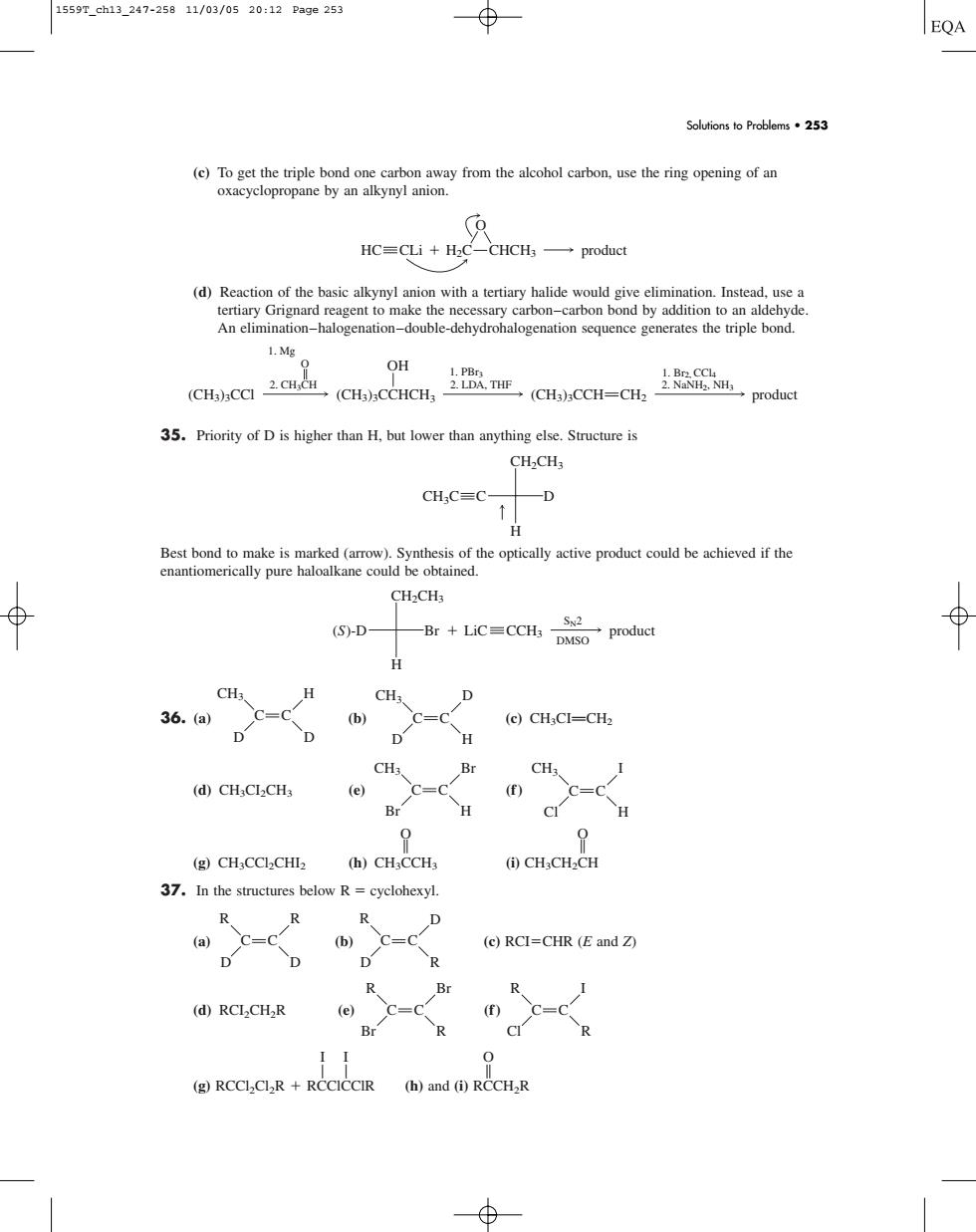正在加载图片...

1559T_ch13_247-25811/03/0520:12Pa9e253 ⊕ EQA Solutions to Problems.253 HC=CLi HC-CHCHs-product (d)Reactin of the basic alkynyln witha tertiary Instead.use efm9aaoecnlonhubeeiydiaioegeaioneueacegemcTaesheupteboad 1.Mg OH (CH cc,(C.CC-Cods 35.Priority of D is higher than H.but lower than anything else.Structure is CH2CH3 CH;C=C- y p CH2CHs (S)D- -Br+LiC=CCHs Dtso product CH H D 36.(a C=0 D (b) c-C-# (e)CH:CI-CH2 D BrCH、 (d)CH,CICHs (e) H 0 (g)CH,CClCHI2 (h)CH3CCH O CH-CH-CH 37.In the structures below R=cyclohexyl. R D C=C (b) C=C. (c)RCI=CHR (E and Z) D D R Br (e C-C (f) Br II 0 (g)RCCICCIR (h)and (i)RCCH2R (c) To get the triple bond one carbon away from the alcohol carbon, use the ring opening of an oxacyclopropane by an alkynyl anion. (d) Reaction of the basic alkynyl anion with a tertiary halide would give elimination. Instead, use a tertiary Grignard reagent to make the necessary carbon–carbon bond by addition to an aldehyde. An elimination–halogenation–double-dehydrohalogenation sequence generates the triple bond. 35. Priority of D is higher than H, but lower than anything else. Structure is Best bond to make is marked (arrow). Synthesis of the optically active product could be achieved if the enantiomerically pure haloalkane could be obtained. 36. (a) (b) (c) CH3CIPCH2 (d) CH3CI2CH3 (e) (f ) O O B B (g) CH3CCl2CHI2 (h) CH3CCH3 (i) CH3CH2CH 37. In the structures below R cyclohexyl. (a) (b) (c) RCICHR (E and Z) (d) RCI2CH2R (e) (f ) II O AA B (g) RCCl2Cl2R RCClCClR (h) and (i) RCCH2R C R I Cl R C C R Br Br R C C R D D R C C D R D R C C H CH3 Cl I C C H CH3 Br Br C C H CH3 D D C C CH3 H D D C H (S)-D CCH3 CH2CH3 Br product LiC SN2 DMSO H CH3C C CH2CH3 D (CH3)3CCl (CH3)3CCHCH3 OH (CH3)3CCH CH2 product 2. CH3CH O 1. Mg 2. LDA, THF 1. PBr3 2. NaNH2, NH3 1. Br2, CCl4 HC O CLi H2C CHCH3 product Solutions to Problems • 253 1559T_ch13_247-258 11/03/05 20:12 Page 253